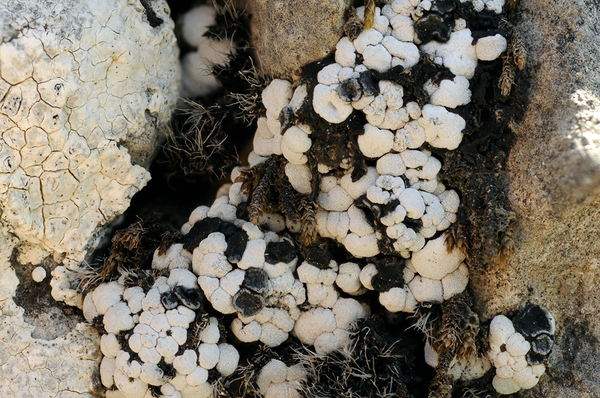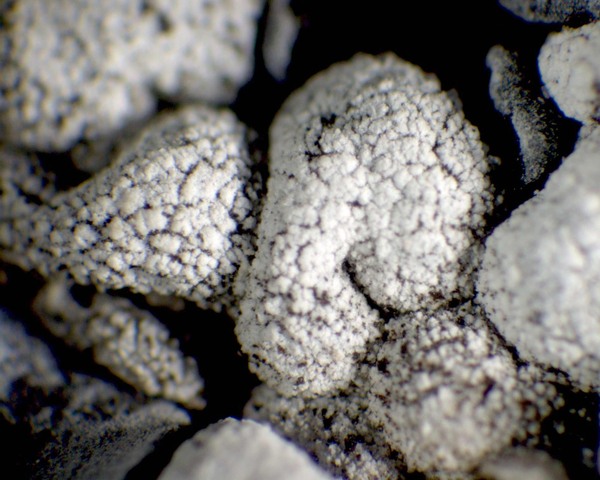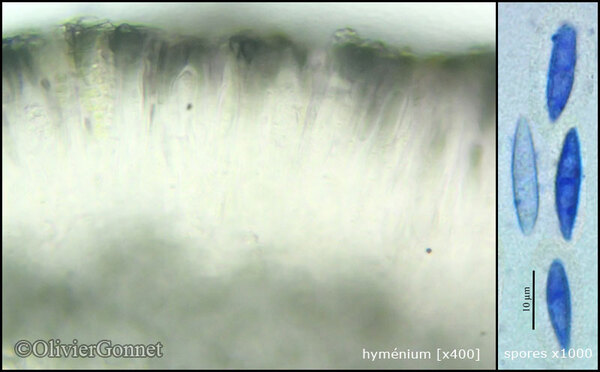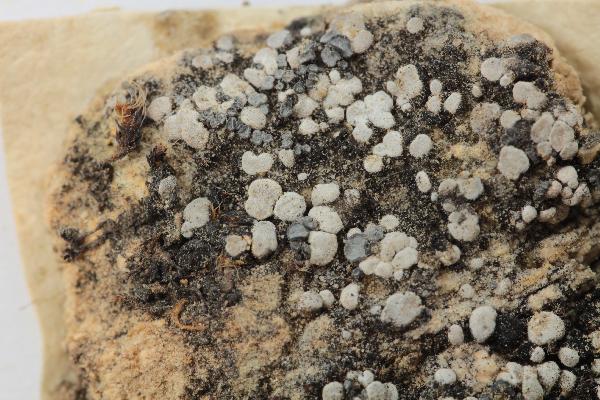Thalloidima diffractum (A. Massal.) A. Massal.
Mem. Lichenogr.: 121, 1853.. Basionym: Thalloidima vesiculare var. diffractum A. Massal. - Ric. Auton. Lich. Crost.: 95, 1852.
Synonyms: Biatorina diffracta (A. Massal.) Jatta; Toninia diffracta (A. Massal.) Zahlbr.
Distribution: N - VG, Frl, Ven (Lazzarin 2000b, Nascimbene & Caniglia 2003c), TAA (Nascimbene & al. 2022), Piem (Hafellner & al. 2004, Isocrono & al. 2006), VA (Piervittori & Isocrono 1999), Emil (Fariselli & al. 2020), Lig. C - Tosc, Marc (Nimis & Tretiach 1999), Umb (Genovesi & al. 2002, Ravera & al. 2006), Laz, Abr (Gheza & al. 2021), Mol (Garofalo & al. 1999, Caporale & al. 2008, Nimis & Tretiach 1999), Sar. S - Camp (Garofalo & al. 1999, 2010, Ricciardi & al. 2000, Aprile & al. 2003, 2003b, Nimis & Tretiach 2004), Pugl, Bas, Cal (Puntillo 1996), Si (Campisi & al. 2020).
Description: Thallus squamulose, pale grey, but densely covered in a white, granular, smooth or shallowly fissured pruina, more rarely partly epruinose, the squamules more or less orbicular, up to 3(-4) mm wide, initially scattered, later sometimes contiguous but not forming distinct rosettes, weakly to strongly convex; lower surface pale grey to brownish. Upper cortex 30-70 μm thick, lacking an epinecral layer, encrusted with crystals of calcium oxalates; medulla white, usually without crystals; lower cortex thinner than upper cortex, without crystals. Apothecia frequent, lecideine, round, sessile, strongly constricted at base, up to 1.5 mm across, with a black, more or less pruinose, flat to weakly convex, smooth disc and a distinct, smooth, persistent proper margin. Proper exciple brown to dark reddish brown throughout, sometimes with a darker grey rim, in which case it reacts K+ and N+ violet; epithecium grey, K+ and N+ violet; hymenium colourless, 40-70 μm high; paraphyses simple or sparingly branched and anastomosing in upper part, thin-walled, the apical cell distinctly swollen, with a gelatinous pigment cap; hypothecium brown in upper part, paler brown below. Asci 8-spored, clavate, surrounded by a gelatinous I+ blue coat, with a well-developed I+ blue tholus with a I+ darker blue tube and a well-developed ocular chamber, Bacidia-type. Ascospores 1-septate, hyaline, fusiform, 14-22(-26) x 3-5 μm. Photobiont chlorococcoid. Spot tests: thallus K-, C-, KC-, P-, UV-. Chemistry: thallus without lichen substances or with unidentified terpenoids; apothecia with the Sedifolia-grey pigment. Note: a mainly southern, eurasiatic species found in small fissures of steeply inclined faces of calcareous rocks, often on cyanobacteria or cyanobacterial lichens when young, sometimes on soil, with optimum at low altitudes, but exceptionally reaching the Alpine belt.
Growth form: Squamulose
Substrata: rocks, soil, terricolous mosses, and plant debris
Photobiont: green algae other than Trentepohlia
Reproductive strategy: mainly sexual
Subcontinental: restricted to areas with a dry-subcontinental climate (e.g. dry Alpine valleys, parts of Mediterranean Italy)
Commonnes-rarity: (info)
Alpine belt: rare
Subalpine belt: rather rare
Oromediterranean belt: rather common
Montane belt: rather common
Submediterranean belt: common
Padanian area: absent
Humid submediterranean belt: common
Humid mediterranean belt: rather common
Dry mediterranean belt: rather rare

Predictive model
Herbarium samples
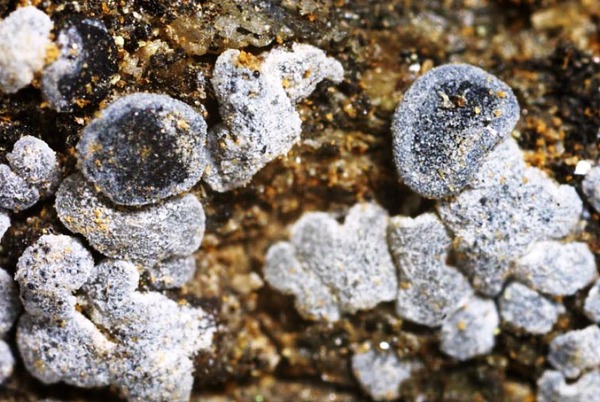

Felix Schumm CC BY-SA 4.0
[12284], Griechenland, N-Samos, bei Manolates südlich von Agios Konstandinos, 37°47.185'N, 26°49.533'E, 341 m; halbschattige bis besonnte Terrassenmauern; Glimmerschiefer.
Leg. Schumm 02.05.2006, det. Schumm 2006.
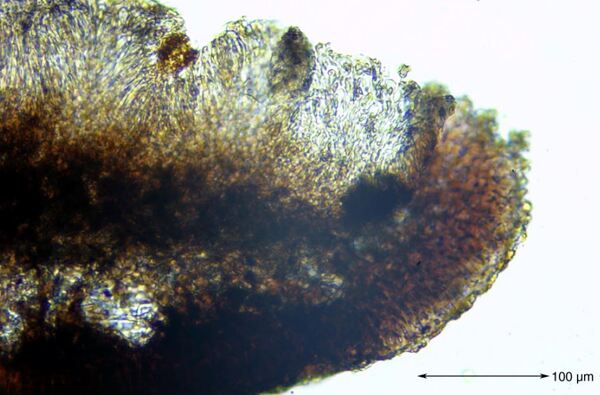

Felix Schumm – CC BY-SA 4.0
[12284], Griechenland, N-Samos, bei Manolates südlich von Agios Konstandinos, 37°47.185'N, 26°49.533'E, 341 m; halbschattige bis besonnte Terrassenmauern; Glimmerschiefer. Leg. Schumm 02.05.2006, det. Schumm 2006.
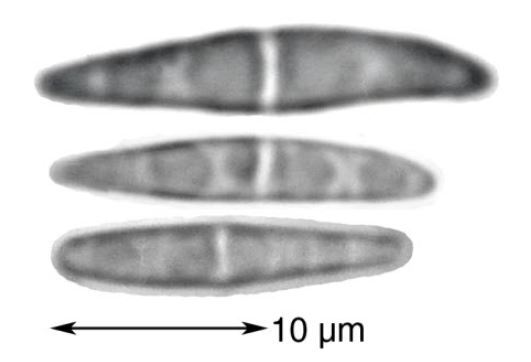

Felix Schumm – CC BY-SA 4.0
[12284], Griechenland, N-Samos, bei Manolates südlich von Agios Konstandinos, 37°47.185'N, 26°49.533'E, 341 m; halbschattige bis besonnte Terrassenmauern; Glimmerschiefer. Leg. Schumm 02.05.2006, det. Schumm 2006.
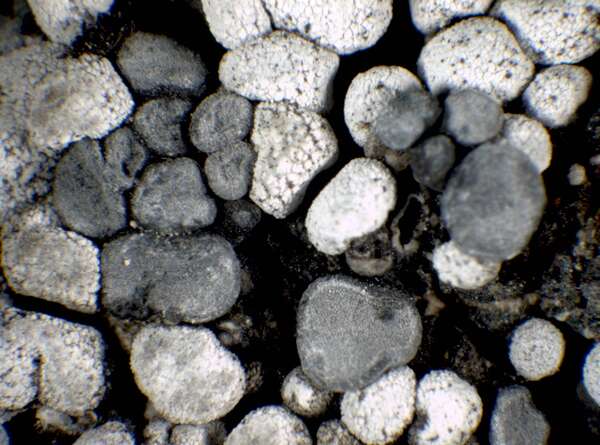

P.L. Nimis; Owner: Department of Life Sciences, University of Trieste
Herbarium: TSB (33858)
2001/12/03
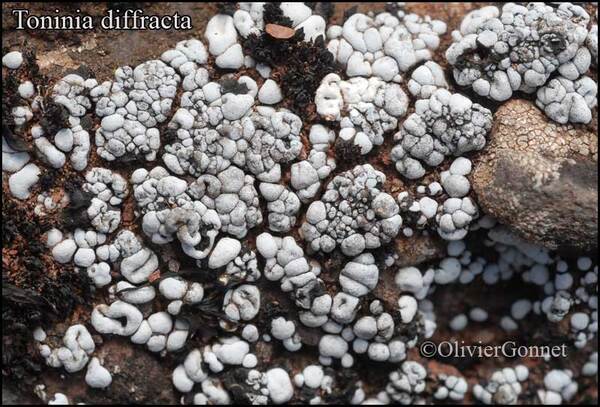
Courtesy Danièle et Olivier Gonnet - Source: https://www.afl-lichenologie.fr/Photos_AFL/Photos_AFL_T/Textes_T2/Thalloidima_diffractum.htm
France, session AFL 2010 - Hérault
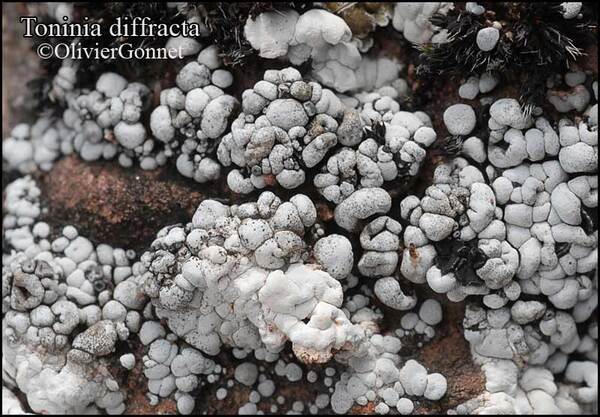
Courtesy Danièle et Olivier Gonnet - Source: https://www.afl-lichenologie.fr/Photos_AFL/Photos_AFL_T/Textes_T2/Thalloidima_diffractum.htm
France, session AFL 2010 - Hérault
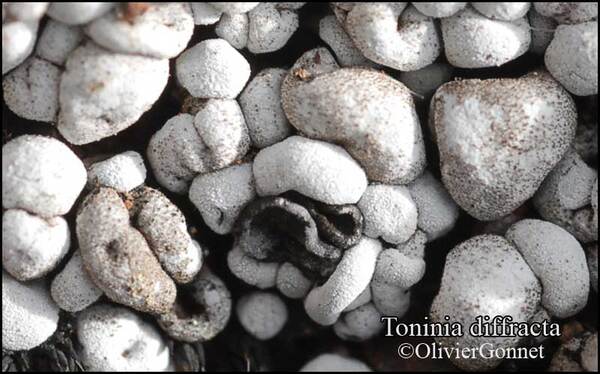
Courtesy Danièle et Olivier Gonnet - Source: https://www.afl-lichenologie.fr/Photos_AFL/Photos_AFL_T/Textes_T2/Thalloidima_diffractum.htm
France, session AFL 2010 - Hérault
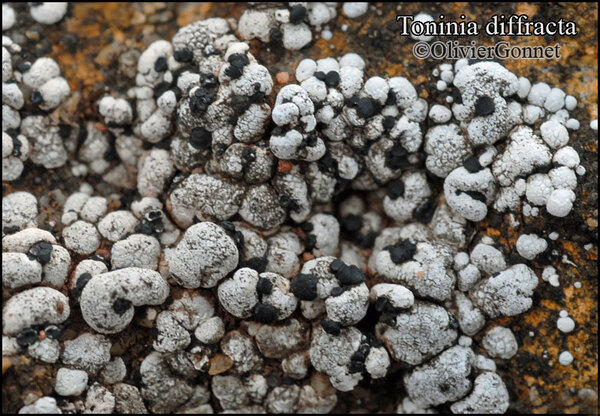
Courtesy Danièle et Olivier Gonnet - Source: https://www.afl-lichenologie.fr/Photos_AFL/Photos_AFL_T/Textes_T2/Thalloidima_diffractum.htm
France, Mont Cenis - Vanoise - Haute-Savoie
Growth form: Squamulose
Substrata: rocks, soil, terricolous mosses, and plant debris
Photobiont: green algae other than Trentepohlia
Reproductive strategy: mainly sexual
Subcontinental: restricted to areas with a dry-subcontinental climate (e.g. dry Alpine valleys, parts of Mediterranean Italy)
Commonnes-rarity: (info)
Alpine belt: rare
Subalpine belt: rather rare
Oromediterranean belt: rather common
Montane belt: rather common
Submediterranean belt: common
Padanian area: absent
Humid submediterranean belt: common
Humid mediterranean belt: rather common
Dry mediterranean belt: rather rare

Predictive model
| Herbarium samples |


Felix Schumm CC BY-SA 4.0
[12284], Griechenland, N-Samos, bei Manolates südlich von Agios Konstandinos, 37°47.185'N, 26°49.533'E, 341 m; halbschattige bis besonnte Terrassenmauern; Glimmerschiefer.
Leg. Schumm 02.05.2006, det. Schumm 2006.


Felix Schumm – CC BY-SA 4.0
[12284], Griechenland, N-Samos, bei Manolates südlich von Agios Konstandinos, 37°47.185'N, 26°49.533'E, 341 m; halbschattige bis besonnte Terrassenmauern; Glimmerschiefer. Leg. Schumm 02.05.2006, det. Schumm 2006.


Felix Schumm – CC BY-SA 4.0
[12284], Griechenland, N-Samos, bei Manolates südlich von Agios Konstandinos, 37°47.185'N, 26°49.533'E, 341 m; halbschattige bis besonnte Terrassenmauern; Glimmerschiefer. Leg. Schumm 02.05.2006, det. Schumm 2006.


P.L. Nimis; Owner: Department of Life Sciences, University of Trieste
Herbarium: TSB (33858)
2001/12/03

Courtesy Danièle et Olivier Gonnet - Source: https://www.afl-lichenologie.fr/Photos_AFL/Photos_AFL_T/Textes_T2/Thalloidima_diffractum.htm
France, session AFL 2010 - Hérault

Courtesy Danièle et Olivier Gonnet - Source: https://www.afl-lichenologie.fr/Photos_AFL/Photos_AFL_T/Textes_T2/Thalloidima_diffractum.htm
France, session AFL 2010 - Hérault

Courtesy Danièle et Olivier Gonnet - Source: https://www.afl-lichenologie.fr/Photos_AFL/Photos_AFL_T/Textes_T2/Thalloidima_diffractum.htm
France, session AFL 2010 - Hérault

 INDEX FUNGORUM
INDEX FUNGORUM
 GBIF
GBIF
 DOLICHENS
DOLICHENS
